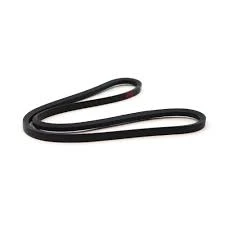- Arabic
- French
- Russian
- Spanish
- Portuguese
- Turkish
- Armenian
- English
- Albanian
- Amharic
- Azerbaijani
- Basque
- Belarusian
- Bengali
- Bosnian
- Bulgarian
- Catalan
- Cebuano
- Corsican
- Croatian
- Czech
- Danish
- Dutch
- Afrikaans
- Esperanto
- Estonian
- Finnish
- Frisian
- Galician
- Georgian
- German
- Greek
- Gujarati
- Haitian Creole
- hausa
- hawaiian
- Hebrew
- Hindi
- Miao
- Hungarian
- Icelandic
- igbo
- Indonesian
- irish
- Italian
- Japanese
- Javanese
- Kannada
- kazakh
- Khmer
- Rwandese
- Korean
- Kurdish
- Kyrgyz
- Lao
- Latin
- Latvian
- Lithuanian
- Luxembourgish
- Macedonian
- Malgashi
- Malay
- Malayalam
- Maltese
- Maori
- Marathi
- Mongolian
- Myanmar
- Nepali
- Norwegian
- Norwegian
- Occitan
- Pashto
- Persian
- Polish
- Punjabi
- Romanian
- Samoan
- Scottish Gaelic
- Serbian
- Sesotho
- Shona
- Sindhi
- Sinhala
- Slovak
- Slovenian
- Somali
- Sundanese
- Swahili
- Swedish
- Tagalog
- Tajik
- Tamil
- Tatar
- Telugu
- Thai
- Turkmen
- Ukrainian
- Urdu
- Uighur
- Uzbek
- Vietnamese
- Welsh
- Bantu
- Yiddish
- Yoruba
- Zulu
Sep . 29, 2024 04:10 Back to list
Understanding the Costs of Replacing Your Serpentine Belt for Optimal Vehicle Performance
Understanding the Cost of Serpentine Belts
The serpentine belt is a crucial component in modern vehicles, playing a vital role in driving multiple accessories, such as the alternator, power steering pump, air conditioning compressor, and water pump. Given its importance, knowing the average costs associated with serpentine belts and their replacement can help you budget for vehicle maintenance effectively.
What is a Serpentine Belt?
A serpentine belt is a long, winding belt that wraps around a series of pulleys in the engine compartment. Over time, due to wear and tear from constant use, exposure to heat, and environmental elements, it can become frayed, cracked, or damaged. Regular inspections and timely replacement are essential to prevent operational failures that could lead to costly repairs.
Average Cost of Serpentine Belts
The cost of a serpentine belt can vary significantly, depending on the make and model of your vehicle. On average, serpentine belts range from $25 to $100. However, those for high-performance or luxury vehicles might cost more, sometimes exceeding $150.
Factors Influencing the Cost
Several factors can influence the overall cost of purchasing and replacing a serpentine belt
1. Vehicle Make and Model Different vehicles require different types of belts, and some manufacturers charge more for their parts. Checking with your vehicle’s manufacturer or reputable auto parts retailers will give you the best indication of the price range specific to your vehicle.
serpentine belt cost

2. Aftermarket vs. OEM Original Equipment Manufacturer (OEM) parts are usually more expensive than aftermarket options. While OEM parts guarantee compatibility and quality, aftermarket options might offer a more budget-friendly solution, albeit sometimes with varying quality.
3. Labor Costs Labor costs will also contribute to the overall expense. If you choose to have a professional mechanic replace the serpentine belt, labor fees may range from $75 to $150 per hour, depending on the shop. Given that replacing a serpentine belt can typically take about one hour, this is an additional cost to consider.
4. Location The geographical location can significantly influence repair costs due to varying labor rates and parts availability. Urban areas with a higher cost of living may charge more than rural garages.
5. Condition of Other Components When replacing a serpentine belt, it's wise to inspect other related components, such as tensioners and pulleys. If these parts are worn, replacing them at the same time can save on future labor costs but will also increase your immediate expense.
DIY Replacement
For those who are mechanically inclined, replacing a serpentine belt can be a straightforward DIY project. There are numerous online tutorials available, and the required tools are often minimal. If you opt for this route, the only cost incurred would be that of the belt itself, making it a cost-effective solution.
Conclusion
In conclusion, understanding the cost of serpentine belts and associated factors can help car owners make informed decisions regarding maintenance. Regular inspections can prevent unexpected breakdowns, ultimately saving money in the long run. By staying proactive and aware of your serpentine belt's condition, you can ensure your vehicle continues to run smoothly without incurring significant expenses. Always consult your vehicle’s manual or a qualified mechanic to determine the appropriate replacement interval and cost specifics for your particular make and model.
-
Korean Auto Parts Timing Belt 24312-37500 For Hyundai/Kia
NewsMar.07,2025
-
7PK2300 90916-T2024 RIBBED BELT POLY V BELT PK BELT
NewsMar.07,2025
-
Chinese Auto Belt Factory 310-2M-22 For BMW/Mercedes-Benz
NewsMar.07,2025
-
Chinese Auto Belt Factory 310-2M-22 For BMW/Mercedes-Benz
NewsMar.07,2025
-
90916-02660 PK Belt 6PK1680 For Toyota
NewsMar.07,2025
-
drive belt serpentine belt
NewsMar.07,2025

